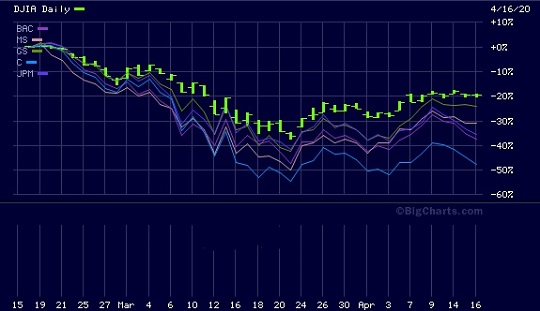Investing in stocks is an exhilarating journey that allows individuals to participate in the growth and success of companies. While many people associate investing with high-priced stocks, there is a whole world of opportunities available in stocks priced at $5 and under.
These stocks offer unique benefits and risks that can make investing even more thrilling. In this article, we will explore the concept of stocks under $5, discuss their potential benefits and risks, and provide valuable insights on how to navigate this exciting market.
Explaining the Concept of Stocks Priced at $5 and Under
Stocks priced at $5 and under, also known as penny stocks or micro-cap stocks, represent shares of companies with a smaller market capitalization. These stocks are more affordable for investors with limited funds, allowing them to buy more shares for the same amount of money.
However, investing in penny stocks carries higher risks due to lower liquidity, volatility, and potential lack of regulatory oversight. Thorough research and understanding of the company’s financials and industry trends are essential for successful investing in this segment.
Highlighting the Potential Benefits and Risks Associated with These Stocks
Investing in stocks under $5 offers potential benefits such as high returns on investment and opportunities to discover hidden gems. These low-priced stocks can deliver substantial percentage gains, making them appealing for short-term investors or those seeking rapid growth.
Additionally, smaller companies often have greater room for growth compared to larger corporations, allowing investors to potentially benefit from their future success.
However, investing in stocks under $5 also carries risks. These include higher volatility due to lower liquidity, increased susceptibility to market manipulation, and the potential for companies to go bankrupt or fail. Thorough research and caution are necessary when considering investments in these stocks.
Discussing the Potential for High Returns on Investment
Investing in stocks under $5 can lead to significant returns on investment. The low share price means that even a small increase can result in substantial percentage gains.
Smaller companies often have more growth potential compared to larger corporations, offering investors the opportunity to ride their success and earn profits as they expand and gain market recognition. However, it’s important to conduct thorough research and analysis to mitigate risks and make informed investment decisions.
Investing in stocks under $5 presents an exciting opportunity for high returns, but careful consideration is key for success in this dynamic market.
Exploring the Opportunity for Growth in Small Companies
Small companies trading under $5 offer an exciting chance for investors to tap into significant growth potential. These companies, often operating in emerging industries or with innovative products and services, hold promise for future success.
To make the most of this opportunity, thorough research is essential. By analyzing factors such as revenue growth, competitive advantage, and disruptive business models, investors can identify promising small-cap stocks early on.
Investing in these stocks positions investors to benefit as the companies grow and attract more attention from the market.
When searching for stocks under $5, it’s crucial to conduct proper due diligence. Here are some strategies to help find the best opportunities:
-
Industry Research: Stay informed about emerging industries and trends that show potential for future growth.
-
Financial Analysis: Scrutinize a company’s financials for consistent earnings growth and a well-managed balance sheet.
-
Competitive Advantage: Look for companies with unique selling propositions or advantages over their competitors.
-
Management Team: Evaluate the expertise and track record of the company’s leadership to gauge their ability to navigate challenges.
-
Market Potential: Assess the size of the addressable market and whether there is room for significant growth.
-
Future Outlook: Analyze industry trends, regulatory changes, and macroeconomic factors that could impact a company’s performance.
By following these strategies and conducting thorough research, investors can position themselves to take advantage of small-cap stocks’ growth potential under $5. While risks exist in any investment, diligent analysis increases the chances of identifying stocks poised for long-term success.
Emphasizing the Importance of Thorough Research Before Investing
Thorough research is crucial when investing in stocks under $5. Analyzing a company’s financials, understanding industry dynamics, evaluating competitive positioning, and assessing growth prospects are key steps to separate promising stocks from potential pitfalls.
By dedicating time to comprehensive research, investors can make informed decisions that maximize returns while minimizing risks.
Providing Tips and Strategies for Identifying Promising Stocks
To identify promising stocks, consider the following strategies:
-
Screening for key financial metrics: Look for companies with strong revenue growth, increasing profit margins, healthy cash flow generation, and a manageable debt load.
-
Researching industry trends: Stay informed about emerging trends and sectors with potential growth to find small companies with long-term prospects.
-
Assessing management quality: Evaluate the competence and track record of the company’s leadership to ensure effective execution of business strategies.
-
Examining competitive advantages: Identify companies with unique products or services that give them a competitive edge in the market.
By combining these strategies with thorough research and analysis, you can identify promising stocks that have the potential to deliver substantial returns on investment.
Analyzing Financials: Assessing the Viability of Stocks Under $5
Analyzing the financials of stocks under $5 is essential to assess their viability as investment opportunities. Consider crucial financial metrics such as revenue growth, profit margins, cash flow generation, and debt load to gain insights into a company’s financial health and potential for growth.
Remember to diversify your portfolio and conduct thorough research before making any investment decisions.
Explaining Key Financial Indicators to Consider When Evaluating These Stocks
When evaluating stocks under $5, it’s important to consider key financial indicators that provide insights into a company’s financial health and viability as an investment. These indicators include revenue growth, profit margins, cash flow generation, and debt levels.
Revenue growth indicates a growing customer base and demand for the company’s products or services. Profit margins reflect how effectively the company manages costs and prices its offerings. Positive and increasing cash flow from operations demonstrates the company’s ability to generate cash and fund future growth initiatives.
Assessing debt levels relative to cash flow and earnings helps determine if the company has manageable risks.
Analyzing these financial indicators allows investors to make informed decisions by understanding a company’s performance, stability, and potential for growth. Thorough research in these areas minimizes risks and maximizes the chances of achieving favorable returns on investments.
Discussing How to Interpret Financial Statements and Ratios Effectively
Interpreting financial statements and ratios effectively is crucial when evaluating a company’s financial health. Here are some key tips to help you make sense of this information:
- Read annual reports and quarterly filings to gain insights into the company’s operations, financials, risks, and management commentary.
- Compare ratios with industry benchmarks to understand how the company’s financials compare to its peers.
- Consider historical trends in key indicators like revenue growth and profit margins to gauge the company’s performance over time.
By using these techniques, you can gain a deeper understanding of a company’s financial health and make more informed investment decisions.
[lyte id=’Sbp3p_F5ggs’]








